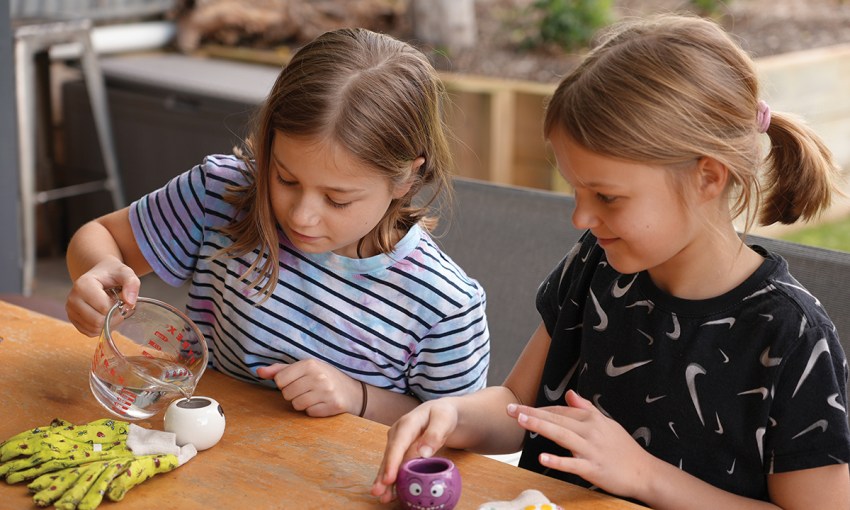Turn screen time into green time by getting children into the garden to explore, discover and totally have fun.
How to get children involved in gardening
For generations, time spent in the garden with family and friends, running through piles of autumn leaves, climbing trees and getting dirt on hands and knees have been formative parts of our young lives. Some of our strongest and fondest memories are built on childhood experiences.
Gardens are spaces where a child can be an explorer, a scientist, an environmentalist or a farmer. Gardens also provide a place of wonder, activity and a catalogue of precious moments. Where else would you see the look of pure joy on a child’s face while watching a butterfly emerge from its chrysalis or the widest and most satisfied grin when crunching into a freshly pulled carrot?
Adding garden time to your children’s lives provides an opportunity for them to create their own special moments – be they sowing, growing, sniffing, picking, eating and so much more. Gardens are the perfect place for a kid’s imagination to run wild and their senses to be stimulated in so many different ways.
Of course, the challenge for many parents is turning screen time into green time. The way to get kids off the couch and outdoors is to provide meaningful and fun garden activities, showing them there is a whole world of discovering, nurturing and sharing to be had.
The good news is you don’t need to be a mega green thumb to encourage your children to garden. Quite the opposite. Introducing gardening to your children can just as life-changing for you as it is for them. I’m a firm believer that there’s a tinge of green to be found in everyone’s thumb, the question is just how much.
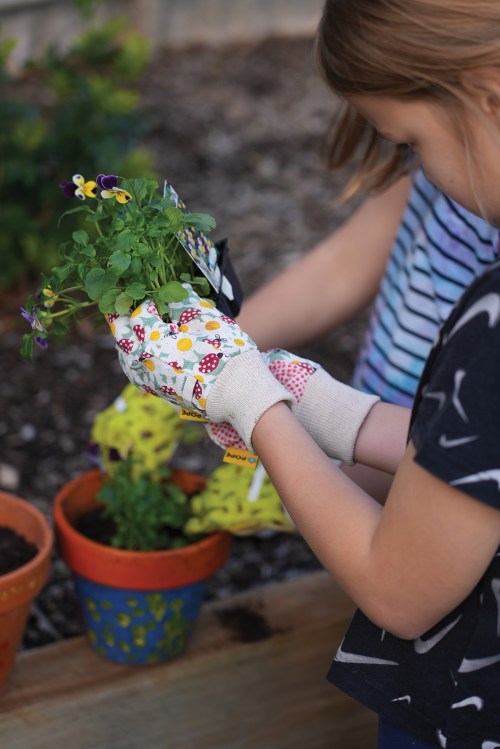
Where to begin? Giving kids their own garden space is a wonderful start. This does not have to be big, a small plot or a single pot work equally well to give kids their own real estate to plant, grow and, importantly, look after. As with adults, gardening success for children is about keeping them interested and keen, which is why what they grow and how much time is involved are all major factors for long term retention.
Your local garden centre is a wonderful source of inspiration and advice for kids gardening. A trip there with children can be turned from a trying affair into a wonderful occasion if all or part of the visit includes something for their personal garden space.
The seed rack is an excellent place to start. Hung alphabetically and visually appealing, seed packets offer a perfect budget entry point for children. Additionally, once planted and sprouting, seeds are the ideal way to illustrate how plants grow. Ask your child to pick two or three packs of seeds. You can add some challenges, such as choosing plants beginning with the letter of their name or their pet’s name to help personalise the choice. Of course, you will need to make sure the varieties chosen are seasonally appropriate to plant out – another thing for the kids to check on the packet.
Of course, seeds do take some time to germinate and grow, so to help balance a child’s need for immediacy, head over to the seedlings. Arguably one of the busiest places in any garden centre, here you’ll find an extensive selection of ready-to-plant vegetables, herbs and flowers for young gardeners.
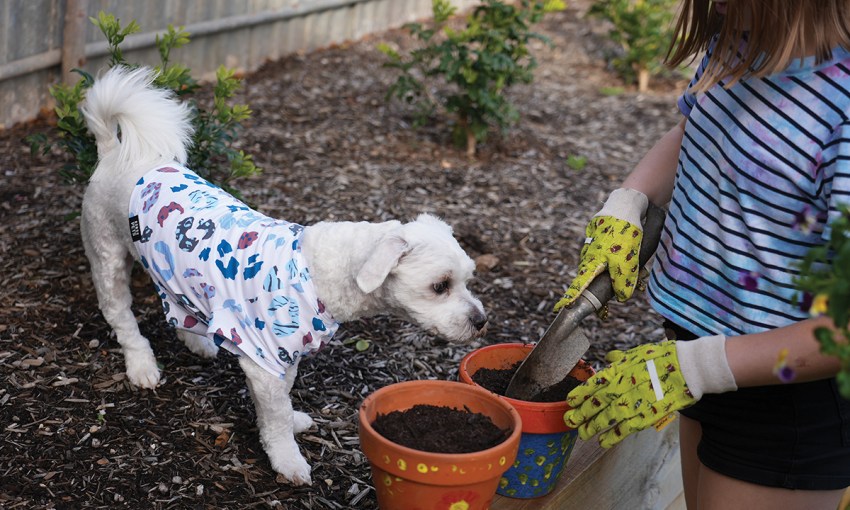
Lettuce is a perfect choice for small green fingers. Available year round, lettuce is such a versatile and hardy vegetable – plus, it is very quick growing, which suits those kids who are impatient to pick and taste. Loose leaf types (rather than hearting lettuces such as Iceberg) are the best choice as outer leaves can be picked as needed and the harvest extended for many weeks. Lettuces also grow very well in pots.
Strawberries are another edible favourite for a kid’s garden. Whether it is spring, summer, autumn or winter, you’ll find a range of multiple-punnet and single-potted strawberries available. Beyond the traditional, keep an eye out for the more exotic varieties, such as bubble gum-flavoured “Bubbleberry” or raspberry-crossed “Strasberry”. As strawberry fruit develop, the challenge for many kids is to actually let them ripen properly before picking.
Parsley is an easy-to-grow herb and an excellent choice for a child’s garden patch. The flat-leaf Italian variety has a robust flavour, while the frizzy curled type is milder. Let your kids decide which one or both to plant. Being an ingredient and garnish in so many dishes, asking your child to pick some parsley from their garden for lunch or dinner can make a meal, and your child, feel very special.
Flowering seedlings such as pansies, petunias, lobelia and a swag more are ideal for kids looking to add a splash of blooming colour to their garden plot. They can choose their favourite colours or create a rainbow feature in their patch.
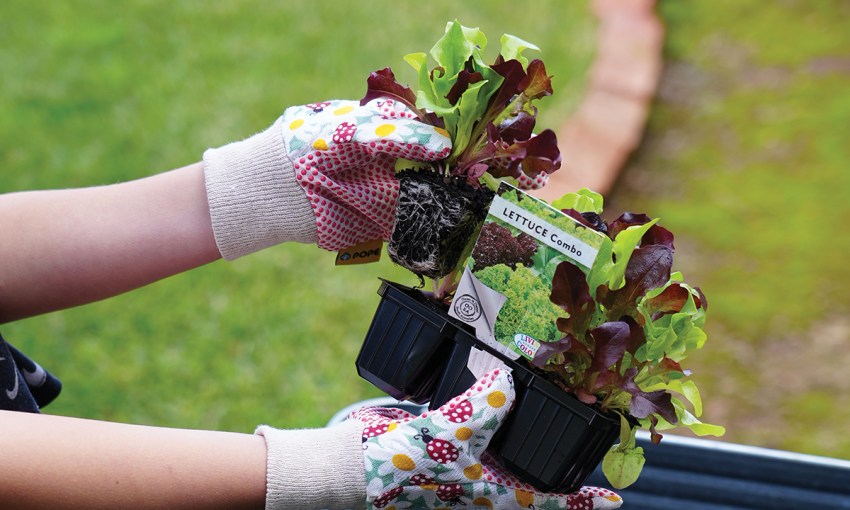
If planting in pots, choose a premium potting mix, it provides the perfect start for any seeds, seedlings or established plants. If planting in ground, a bag of compost or manure will add much-needed organic matter to the soil.
You will also find a range of kid’s gardening equipment and specialised children’s products at your local garden centre. Having gloves that fit them and a small trowel or rake to use – rather than struggling with adult sized equipment – is all part of creating that garden culture, as well as making perfect presents.
Once home, it’s all about setting out the garden space. Talk to your child about choosing a spot that gets at least half a day’s sun to help plants flower and veggies ripen. Assist them with filling containers with potting mix or spread compost across the soil and dig in. This will help them learn that the more organic matter we add, the more earthworms will visit and the better plants will grow.
Let your child decide on the garden design. Some help may be required in opening seed packets and sprinkling and planting the seeds. With veggie, herb and flower seedlings, pinch the container to loosen the root ball, which lets the seedling slip out easily and undamaged. Then into the ground they go. Follow with watering, feeding, watching and waiting. Your child’s garden journey has just begun.
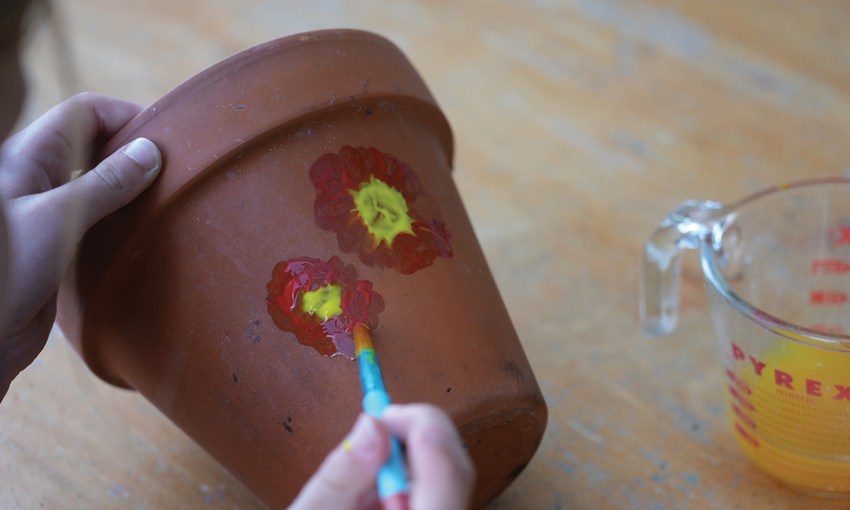
There are so many varied and interesting garden activities for them to try out, here are just a few:
Painted pots – before planting out, grab the paints or markers and let kids decorate their pots. These look great clustered together and really define that garden space as theirs.
Worm farm – children and worms are a perfect combination! Set up a commercial or a homemade worm farm. A wiggly worm-filled container provides an excellent way for children to touch, feel and learn about the benefits of worms.
Butterfly garden – adding plants such as sunflowers, banksia, buddleia and lavender will encourage butterflies to visit, lay their eggs and allow kids to follow a fascinating life cycle.
Kitchen sprouts – an indoor activity that’s easy to do. Add a heaped tablespoon of seeds (mung beans or mustard seed are popular) to a jar, cover with 10cm of warm water and secure a piece of cheesecloth to the jar top, then leave overnight. Drain the water and add a cup of fresh water, swish and drain. Repeat daily until the seeds have shot and are ready to eat; generally 3-5 days.
Magic flowers – pick a flower with white petals – a white daffodil is perfect. Fill up a vase with water and add four or five drops of blue food colouring, then drop in the flower. The dye will be taken up the stem and petals magically change colour. You can try other coloured dyes to create a rainbow bouquet.
This story first appeared in the August 2021 issue of SALIFE magazine.



